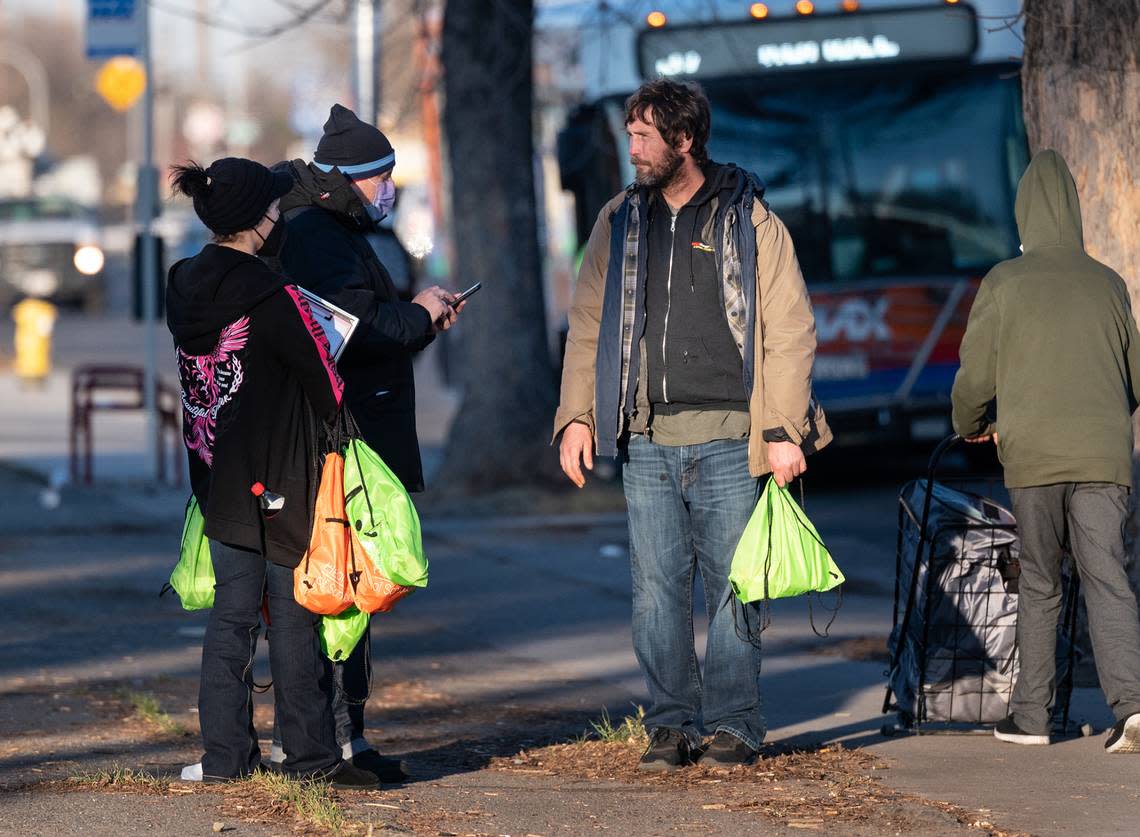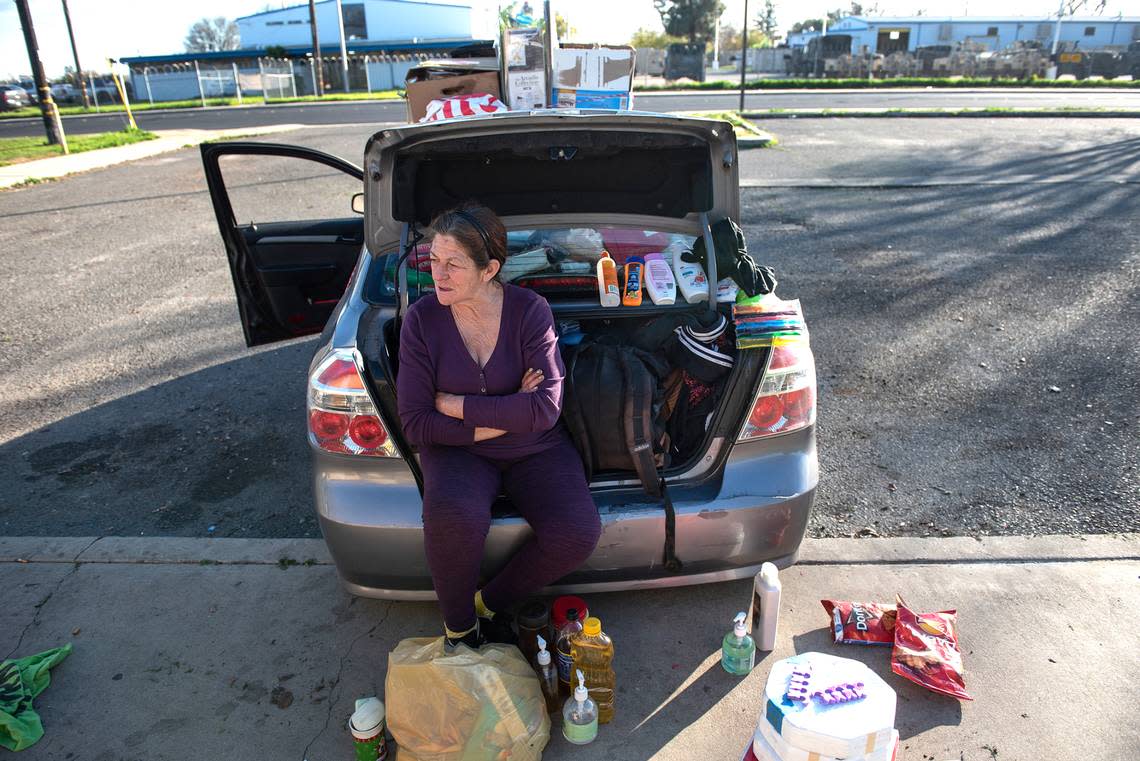Watchdog wants more accountability in Modesto-area efforts to reduce homelessness
While commending the efforts of government and others in Stanislaus County to take on the complex and challenging problem of homelessness, a government watchdog says despite spending huge amounts of money, homelessness continues to grow.
The Stanislaus County Civil Grand Jury also reports that it is hard to evaluate the coordination, effectiveness and accountability of these efforts because they are fragmented and there is not enough accountability in how effectively the money is being spent.
The grand jury’s investigation of the efforts to reduce homelessness are detailed in its 2021-22 report.
“The (grand jury) found that while efforts to coordinate all these agencies and their activities are being pursued, accountability is lacking,” according to the report. “Given the significant dollars spent to address homelessness, this lack of accountability is problematic and can undermine the public’s confidence in our public agencies.”
(The California Constitution requires counties to form civil grand juries annually. The juries are made up of 19 citizens and investigate how well the county, cities, school districts and other local governments perform. This grand jury’s term ended June 30.)
While calling for more accountability, the grand jury report also praised the public and private agencies working to alleviate homelessness in Stanislaus County and noted the many individual success stories the agencies have had with homeless people.
Stanislaus Homeless Alliance Chairman Brad Hawn said he appreciated the grand jury’s efforts and understands how it reached its conclusions. But he said the conclusions are based on incomplete information, though he agrees efforts are too fragmented and more accountability is needed.
The alliance is composed of elected and other officials from throughout the county. Hawn said efforts are underway to better integrate the efforts and increase accountability.
“’Fragmented’ is a good word,” Hawn said, “but we are getting better.”
The grand jury identified dozens of agencies — including the county, cities, nonprofits and faith-based groups — working to prevent and reduce homelessness. And it identified at least $30 million in state and federal funding that has been spent in the last three years. That does not include what the grand jury called “significant private funding” being spent to reduce homelessness.
The grand jury stated that over the years, there have been multiple plans developed to prevent and reduce homelessness. The most recent is the Stanislaus 2021 Regional Strategic Plan to Address Homelessness.
The grand jury’s report, “Homelessness: The Elusive Definition of ‘Success,’” included the annual point in time counts. These counts are conducted in communities nationwide in late January across the United States and are snapshots of homelessness.
Numbers in counts vary
The counts do not tally all of the homeless people in a community, and the results are affected by such factors as how well the counts are organized, how many volunteers participate and whether law enforcement conduct sweeps of homeless camps ahead of the counts.
Counts have taken place in Stanislaus County and its cities since 2005. The numbers have fluctuated, from 1,661 in 2017 and 1,356 in 2018 to 1,923 in 2019 and 2,107 in 2020. The numbers were 2,927 in 2021 and 1,857 in 2022.

The U.S. Department of Housing and Urban Development mandates the counts for communities that apply for and receive certain HUD homeless funding. The last two counts have been affected by the COVID-19 pandemic.
A different method approved by HUD was used in 2021, and the 2022 count had fewer volunteers. Also, law enforcement conducted sweeps ahead of the 2022 count. Officials have said they do not believe homelessness declined between the 2021-22 counts.
The grand jury’s findings include that while the number of homeless people in Stanislaus County rise and fall from year to year, it is increasing over time and was made worse by the pandemic. The jury also found that efforts to prevent homelessness need to improve.
The grand jury said the county’s Community Services Agency, the Stanislaus Community System of Care and the Stanislaus Homeless Alliance need to take the lead in bringing more accountability into the effort to prevent and reduce homelessness.
The system of care is made of local governments, nonprofits, homeless service providers and others. The alliance is made up of elected officials from throughout the county and other officials.
Besides having the Community Services Agency, system of care and alliance take the lead on greater accountability, the grand jury’s other recommendations include building more affordable housing and providing more substance abuse treatment and mental health services.
The recommendations include cities encouraging the building of significantly more affordable housing. “They should evaluate their plans, procedures and requirements with the goal of balancing community goals, standards and aspirations with the need for affordable housing,” according to the report.
The cities should report annually to the Stanislaus Homeless Alliance on their progress.
Hawn, the SHA board chairman, said he has spoken with elected officials from the county and seven of the county’s nine cities (he still needs to speak with Turlock and Riverbank) about the Stanislaus 2021 Regional Strategic Plan to Address Homelessness.
Cities talk about housing
He said the response has been positive from the elected officials. The plan outlines eight goals, including more housing and services for mental health and substance abuse, as well as increased coordination of services.
Hawn added that the alliance has been meeting with city managers to talk about how their communities can build more permanent housing for people who are homeless or at risk of being homeless. Hawn said there is interest among the managers.

“They are talking about it,” he said. “We (the alliance) are not in the business of demanding. We are in the business of helping.”
Hawn said the alliance is where policy gets discussed and officials learn about best practices. He said it can make recommendations but has no authority over the cities and county.
Stanislaus Community System of Care Chairman Jason Conway — who also is the Modesto Gospel Mission executive director — said the system of care is formulating its response to the grand jury report and he would comment once it was complete.
A county spokesman said the Community Services Agency still is analyzing the report and is not yet ready to comment.
The system of care, Community Services Agency and alliance are required to respond within 60 days of receiving the report. The county’s nine cities are required to respond within 90 days.
The 2021-21 grand jury’s full report is available at www.stanislaus.courts.ca.gov/divisions/grand-jury/final-reports. It includes several other investigations, such as looking at Modesto’s and Patterson’s ability to provide their residents with drinking water.
